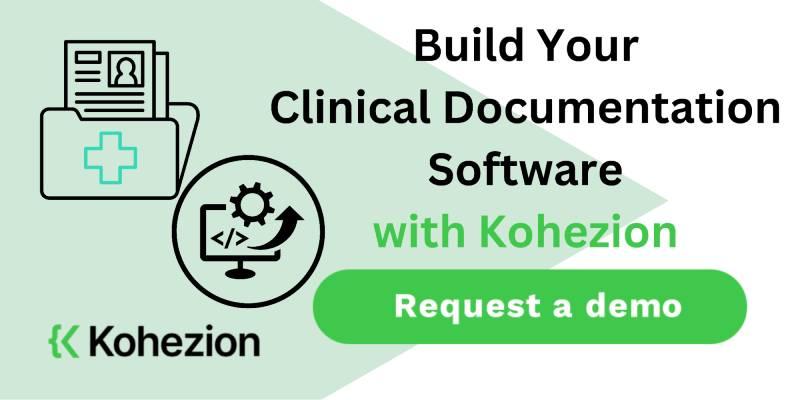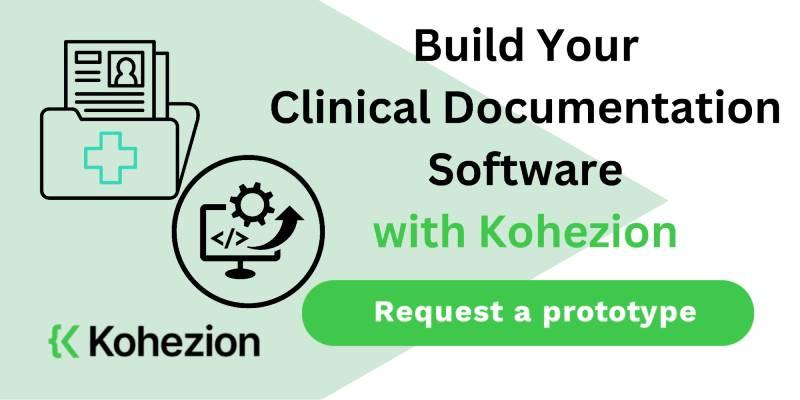Did you know that the largest source of health system waste, about $266 billion, is administrative costs, including documentation issues? Clinical Documentation Improvement Software is key to the need for accuracy and growth. In 2024, healthcare groups focus on these tools to improve their work, reduce mistakes, and improve patient care.
This article will show you the top CDI solutions for this year, with all the details on their features and benefits.
What is Clinical Documentation Improvement Software
Clinical Documentation Improvement Software (CDI) is key to improving healthcare records. It makes sure terms are the same and the coding is right, which is vital for keeping clinical documentation accurate.
Knowing how CDI works in hospitals and clinics helps us see its big impact. It makes healthcare better for everyone.
Inpatient Process of CDI
The inpatient CDI process ensures that hospital records are correct. This is important for patient care and getting paid for services. CDI software helps improve these records, which means fewer mistakes and better patient care. It's a big win for healthcare.
Outpatient Process of CDI
The outpatient CDI process focuses on clinics and doctor's offices. It helps keep patient info up to date and billing correct. CDI software makes this work smoother. This leads to better care and more reliable healthcare data. It's a win-win for everyone involved.

Why is Clinical Documentation Improvement Software Important
CDI software ensures that healthcare records are accurate, which is important for quality care and following rules.
As healthcare changes, the need for precise and detailed records grows. CDI software plays a big role in meeting these needs.
CDI software helps meet new rules and supports value-based care. It ensures that records show that real care is given, meets rules, and helps doctors focus on better patient care.
It also promotes standard practices, which reduce errors and risks in audits and claims. In the end, this makes healthcare safer and more efficient.
Benefits of Clinical Documentation Improvement Software
Investing in Clinical Documentation Improvement Software brings many benefits to healthcare organizations. It improves key processes, improving your efficiency and performance.
Greater Operational Efficiency
CDI software smooths documentation processes, cutting down on paperwork time. Clinical staff can then focus more on patient care.
Better Patient Care and Safety
Accurate documentation leads to better patient care and safety. It helps make precise diagnoses and timely treatment decisions, which improves patient outcomes.
Strengthened Communication Between Healthcare Providers
CDI software helps improve communication among healthcare providers. It ensures that all team members are informed about treatment plans and patient histories.
Higher Accuracy
CDI software makes documentation more accurate. This accuracy improves patient care and increases the chances of maximizing revenue with proper coding.
Increased Revenue
Accurate and compliant documentation leads to higher revenue. It improves billing practices, making your organization financially stable.
Improved Continuity of Care
A comprehensive patient information record ensures smooth care flow. It allows all providers to access critical patient details, improving treatment outcomes.
Maximized Reimbursement
High-quality documentation maximizes reimbursement opportunities. It reduces claim denials and improves cash flow for your organization.
Fewer Denials
Accurate documentation results in fewer claim denials. This leads to smoother billing processes and higher patient satisfaction.
Compliance with Regulations
CDI software keeps your organization compliant with regulations. It protects patient safety and business interests, benefiting both.

Top 10 Clinical Documentation Improvement Tools
Here are the top 10 clinical documentation improvement tools that help healthcare providers improve documentation accuracy, increase efficiency, and ensure compliance.
1. Kohezion
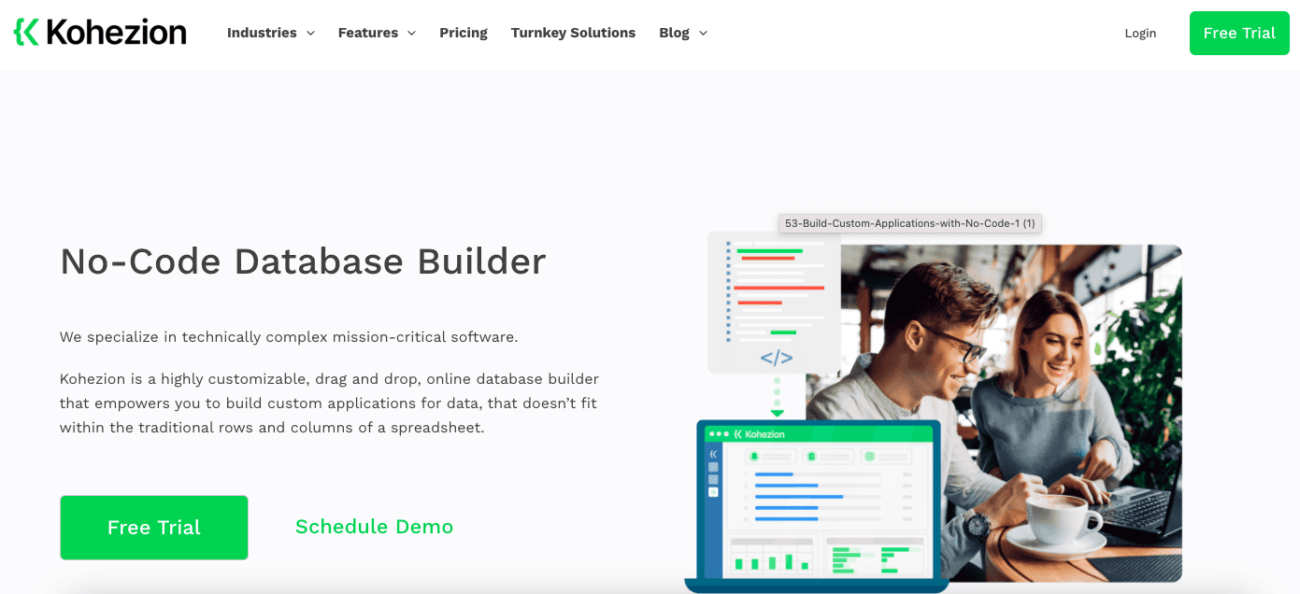
Kohezion is a flexible, cloud-based platform designed to help healthcare organizations improve clinical documentation. With its customizable interface and robust data analytics, it allows users to create tailored solutions that meet specific needs. Its user-friendly design and extensive integration options make it a strong choice for organizations looking to streamline documentation processes.
Top 5 Features:
- Customizable templates and workflows
- Seamless EHR integration
- Real-time data analytics and reporting
- Automated coding suggestions
- Secure cloud-based storage
5 Benefits:
- Reduces administrative burden
- Improves documentation accuracy
- Improves patient care quality
- Supports regulatory compliance
- Increases revenue with accurate coding
2 Cons:
- Requires training to maximize customization features
- May lack advanced AI capabilities compared to some competitors
Best For:
Organizations looking for a customizable and scalable CDI solution.
2. AGS Health
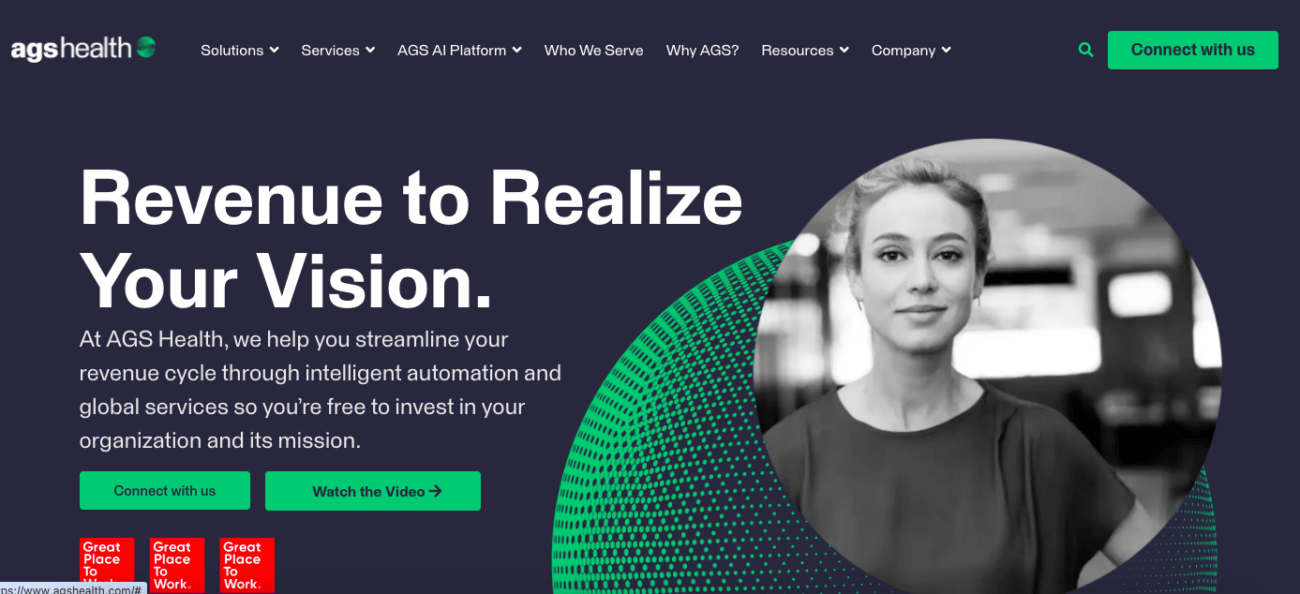
AGS Health provides technology-driven CDI services, focusing on improving clinical documentation accuracy and coding efficiency. With a strong emphasis on compliance and revenue cycle optimization, it offers a range of solutions tailored to the needs of healthcare organizations of various sizes.
Top 5 Features:
- AI-powered CDI technology
- Automated coding and validation
- Comprehensive reporting and analytics
- Clinical documentation auditing
- HIPAA-compliant data security
5 Benefits:
- Increases coding accuracy
- Improves compliance with regulations
- Improves revenue cycle management
- Reduces documentation errors
- Strengthens patient care quality
2 Cons:
- Implementation can be time-consuming
- Higher costs for smaller organizations
Best For:
Healthcare organizations seeking AI-driven solutions for CDI and revenue cycle optimization.
3. FinThrive
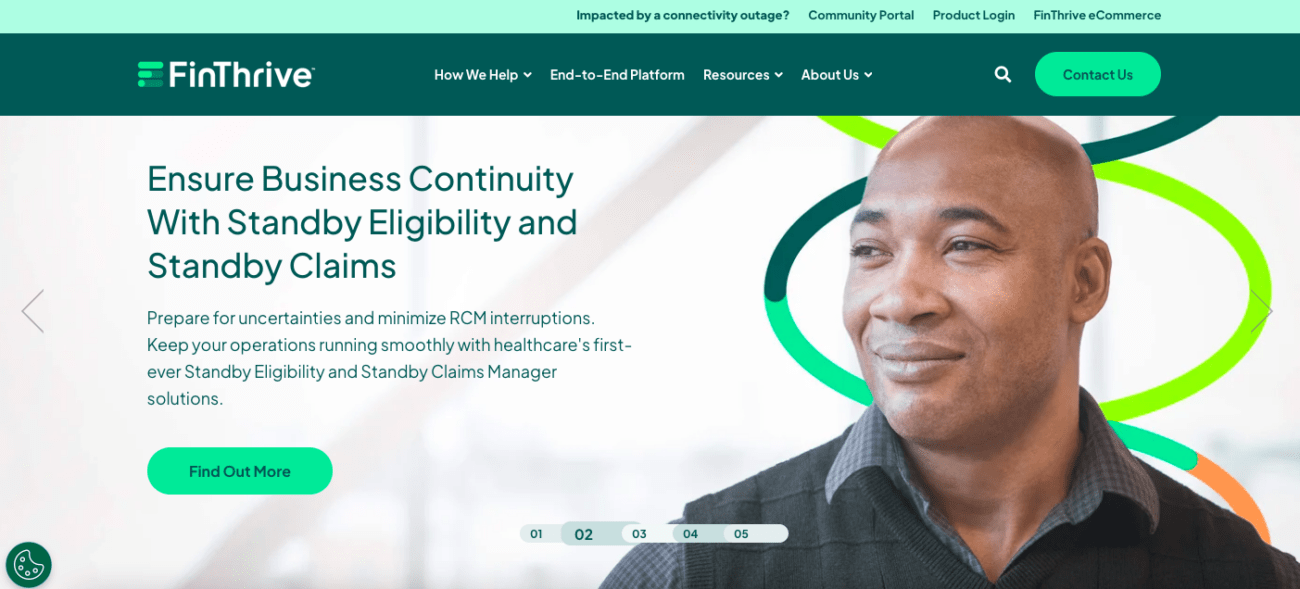
FinThrive is a comprehensive CDI platform that integrates with various EHR systems to improve documentation quality and revenue cycle management. It combines technology with expert insights to improve clinical documentation, coding, and compliance efforts across healthcare organizations.
Top 5 Features:
- Automated documentation and coding suggestions
- Seamless EHR integration
- Real-time reporting and dashboards
- Compliance monitoring tools
- AI-driven insights for better documentation
5 Benefits:
- Improves documentation speed and accuracy
- Improves compliance with industry standards
- Increases reimbursement rates
- Supports better patient outcomes
- Reduces audit risks
2 Cons:
- Complex features may require extensive training
- Can be costly for small practices
Best For:
Large healthcare organizations needing robust CDI and revenue cycle management solutions.
4. Iodine Software
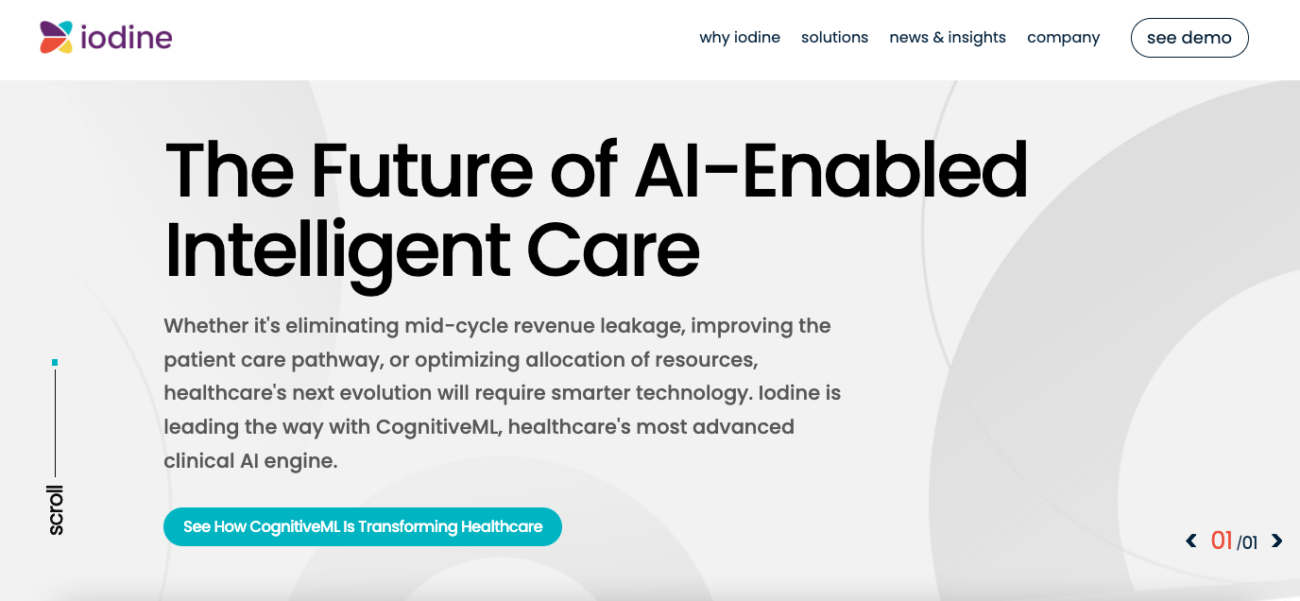
Iodine Software uses artificial intelligence to transform clinical documentation workflows. Providing real-time, data-driven insights helps healthcare providers improve the accuracy and completeness of their documentation, leading to improved revenue cycle performance and patient care outcomes.
Top 5 Features:
- AI-powered clinical documentation insights
- Real-time coding and documentation alerts
- Predictive analytics for risk adjustment
- Seamless integration with EHR systems
- Compliance monitoring and auditing tools
5 Benefits:
- Improves documentation accuracy
- Improves patient safety
- Improves compliance with regulations
- Increases revenue capture
- Reduces manual coding errors
2 Cons:
- High cost for smaller organizations
- Requires staff training to maximize AI features
Best For:
Hospitals and large healthcare systems focused on AI-driven CDI improvements.
5. Nuance
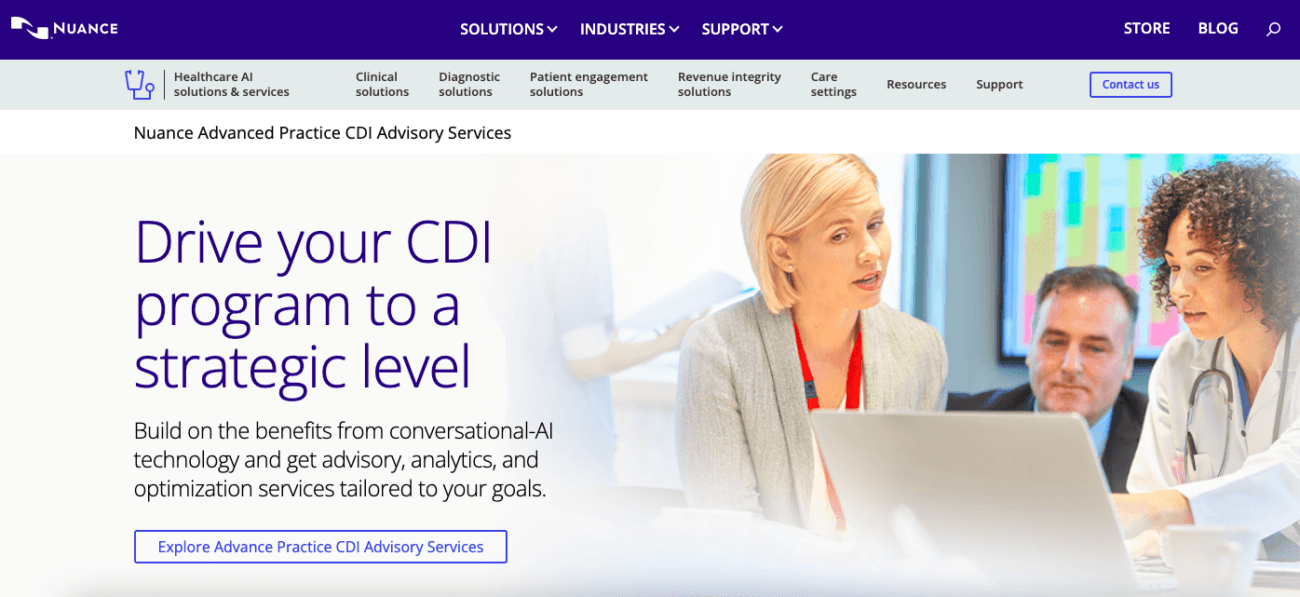
Nuance offers CDI solutions powered by artificial intelligence to help healthcare organizations improve clinical documentation quality and efficiency. Deeply integrated into EHR systems, it provides real-time support to healthcare providers, ensuring accurate documentation and compliance.
Top 5 Features:
- AI-assisted documentation and coding
- Speech recognition for faster note-taking
- Real-time feedback on documentation quality
- Comprehensive compliance tools
- Cloud-based storage for easy access
5 Benefits:
- Speeds up documentation processes
- Improves accuracy with real-time alerts
- Improves compliance with regulations
- Reduces physician burnout
- Increases revenue with better coding
2 Cons:
- Can be expensive for smaller organizations
- May require significant training to use advanced features
Best For:
Healthcare providers looking for AI-driven CDI with speech recognition capabilities.
6. Cerner
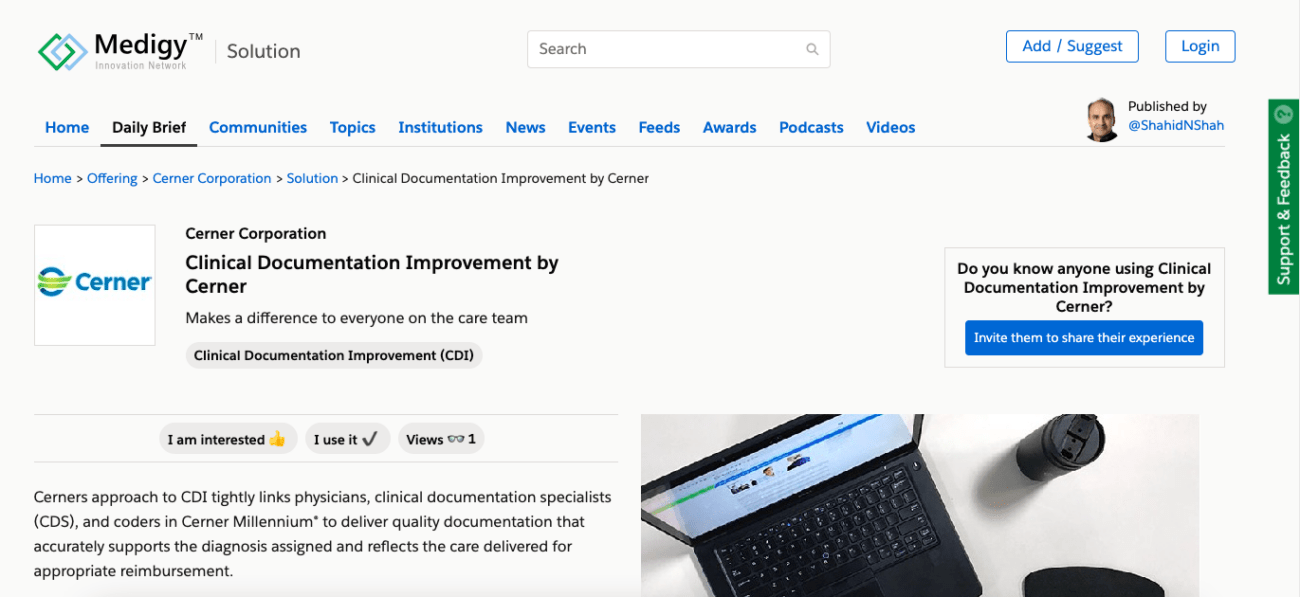
Cerner offers a comprehensive CDI platform designed to enhance clinical documentation, improve coding accuracy, and optimize revenue cycle management. With real-time documentation feedback and integrated compliance tools, Cerner helps healthcare providers maintain accurate patient records and meet regulatory requirements.
Top 5 Features:
- Real-time clinical documentation alerts
- ICD-10 coding integration
- Seamless EHR integration
- Compliance monitoring and reporting
- Customizable workflows for clinical staff
5 Benefits:
- Enhances documentation accuracy
- Improves revenue cycle performance
- Reduces manual coding errors
- Supports regulatory compliance
- Streamlines clinical workflows
2 Cons:
- Higher cost for small practices
- May require extensive training for advanced features
Best For:
Large healthcare organizations needing a robust CDI platform integrated with their EHR system.
7. 3M

3M provides a comprehensive CDI platform that uses artificial intelligence to help healthcare organizations improve documentation accuracy and compliance. It supports real-time documentation review and coding, ensuring patient records are accurate and meet regulatory standards.
Top 5 Features:
- AI-powered documentation insights
- Real-time coding suggestions
- Integrated compliance tools
- Advanced reporting and analytics
- Seamless EHR integration
5 Benefits:
- Improves documentation accuracy
- Improves regulatory compliance
- Increases revenue capture
- Reduces denials and audits
- Supports better patient outcomes
2 Cons:
- Can be costly for smaller organizations
- Requires training for optimal use of AI features
Best For:
Large healthcare organizations looking for AI-driven CDI solutions with strong compliance features.
8. Dolbey

Dolbey is a user-friendly CDI platform designed to improve clinical documentation accuracy and improve revenue cycle outcomes. Its simple interface and powerful reporting tools make it a good option for healthcare organizations of all sizes.
Top 5 Features:
- Easy-to-use interface
- Real-time documentation feedback
- Comprehensive reporting tools
- Integration with popular EHR systems
- Automated ICD-10 coding suggestions
5 Benefits:
- Reduces documentation errors
- Improves revenue with accurate coding
- Improves compliance with regulatory standards
- Increases productivity with automation
- Simplifies workflows for clinical staff
2 Cons:
- Lacks advanced AI capabilities
- May require customization for larger organizations
Best For:
Small to mid-sized healthcare providers seeking an easy-to-use CDI platform.
9. Optum
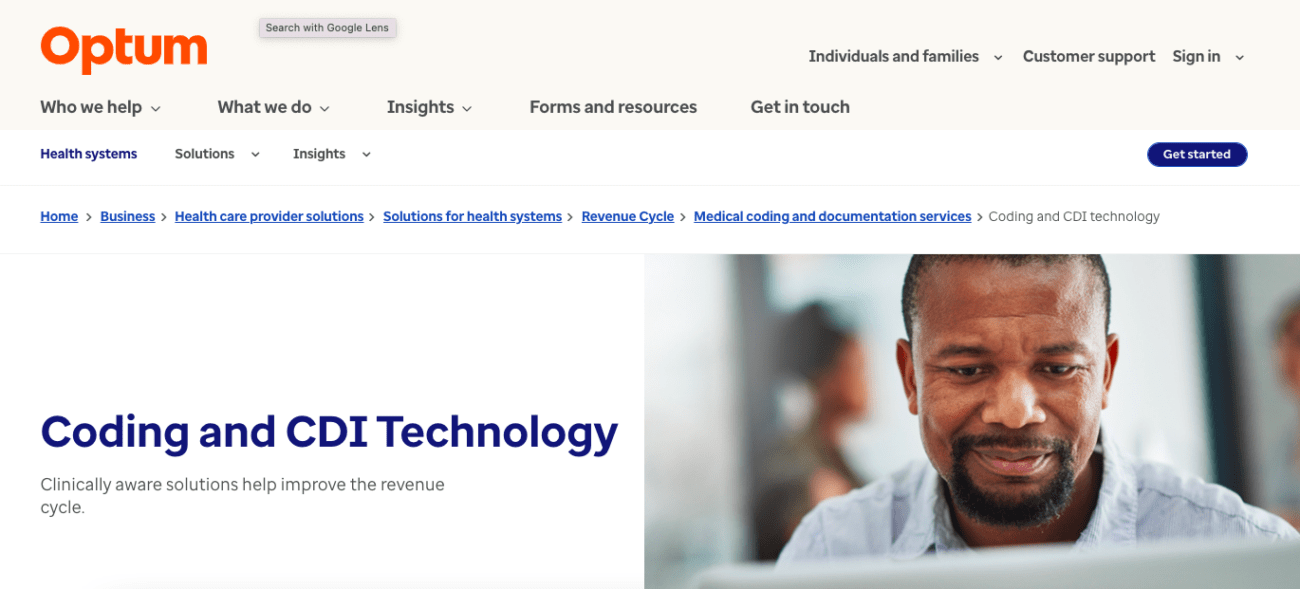
Optum offers a comprehensive CDI platform designed to improve the accuracy and efficiency of clinical documentation. With robust data analytics and integration with EHR systems, it provides healthcare providers with real-time insights and coding suggestions to improve documentation.
Top 5 Features:
- Advanced data analytics
- Real-time documentation insights
- Automated coding suggestions
- Integration with EHR systems
- Compliance monitoring and auditing tools
5 Benefits:
- Increases accuracy of clinical documentation
- Improves compliance with regulations
- Improves revenue with better coding
- Reduces manual coding errors
- Supports better patient care outcomes
2 Cons:
- Complex system may require extensive training
- High cost for smaller practices
Best For:
Large healthcare systems needing advanced analytics and comprehensive CDI solutions.
10. Solventum
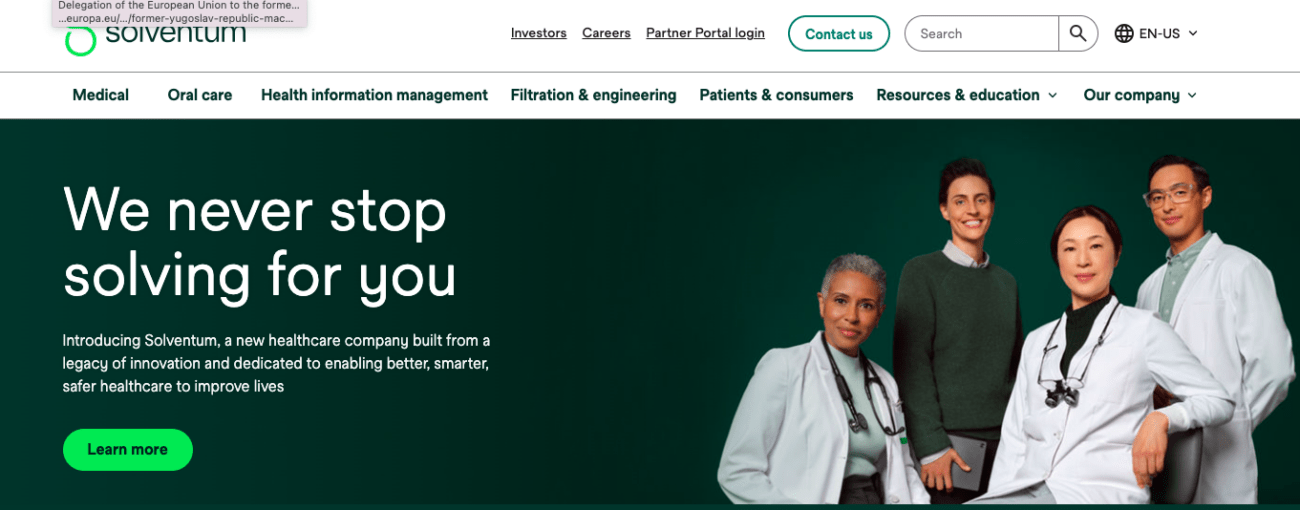
Solventum provides cloud-based CDI software designed to streamline clinical documentation and improve revenue cycle performance. Focusing on ease of use, it helps healthcare organizations improve documentation accuracy and comply with regulatory standards.
Top 5 Features:
- Cloud-based platform
- Real-time documentation feedback
- Automated ICD-10 coding support
- Customizable reporting and analytics
- HIPAA-compliant security features
5 Benefits:
- Improves accuracy and compliance
- Improves reimbursement rates
- Reduces administrative burden
- Supports remote access and collaboration
- Simplifies documentation processes
2 Cons:
- Lacks some advanced AI features
- May require customization for larger healthcare systems
Best For:
Small to mid-sized healthcare organizations looking for a cloud-based CDI solution.
Top Features in Clinical Documentation Improvement Software
Each feature of the CDI software is key to making clinical documentation more efficient and accurate. Here are the top functionalities to look for:
Automated Clinical Data Capture
Automated data capture cuts down on manual entry mistakes. It also makes documentation faster. This lets you focus more on patient care and less on paperwork.
Real-Time Documentation Feedback
Real-time feedback lets clinicians fix issues right away and ensures all important details are captured during patient visits.
ICD-10 Coding Integration
ICD-10 coding integration keeps your documentation up-to-date, preventing billing and reimbursement problems.
Customizable Reporting and Analytics
Customizable reporting gives you insights into your documentation. Analyzing data enables you to spot areas for improvement, leading to better patient care.
Workflow Automation for Documentation
Workflow automation smooths documentation processes. It allows clinical staff to spend more time with patients and less time on paperwork, increasing efficiency in healthcare settings.

5 Steps to Implement CDI Software Successfully
Implementing clinical documentation improvement software requires a clear plan. Focus on five key steps to increase your chances of success. This will also help in smoothly adopting healthcare technology.
Conduct a Needs Assessment
The first step is to understand your organization's needs. Find out what's not working in your current documentation. This helps tailor the CDI software to fit your specific needs. Getting input from all stakeholders gives a full picture of your challenges.
Select the Right CDI Software Solution
Look at different options based on features, support, and system compatibility. Pick a solution that matches your goals for a smooth transition and better user experience.
Develop a Comprehensive Implementation Plan
Set out timelines, roles, and expected results. This plan helps avoid disruptions when switching to new software.
Provide Training for Clinical and Administrative Staff
Make sure both clinical and administrative staff get the training they need. When staff is comfortable with the software, they use it better, improving documentation.
Monitor Progress and Optimize Performance
After implementation, monitor the software closely. Check its performance against your goals regularly, and adjust as needed to keep it working well for your organization's changing needs.
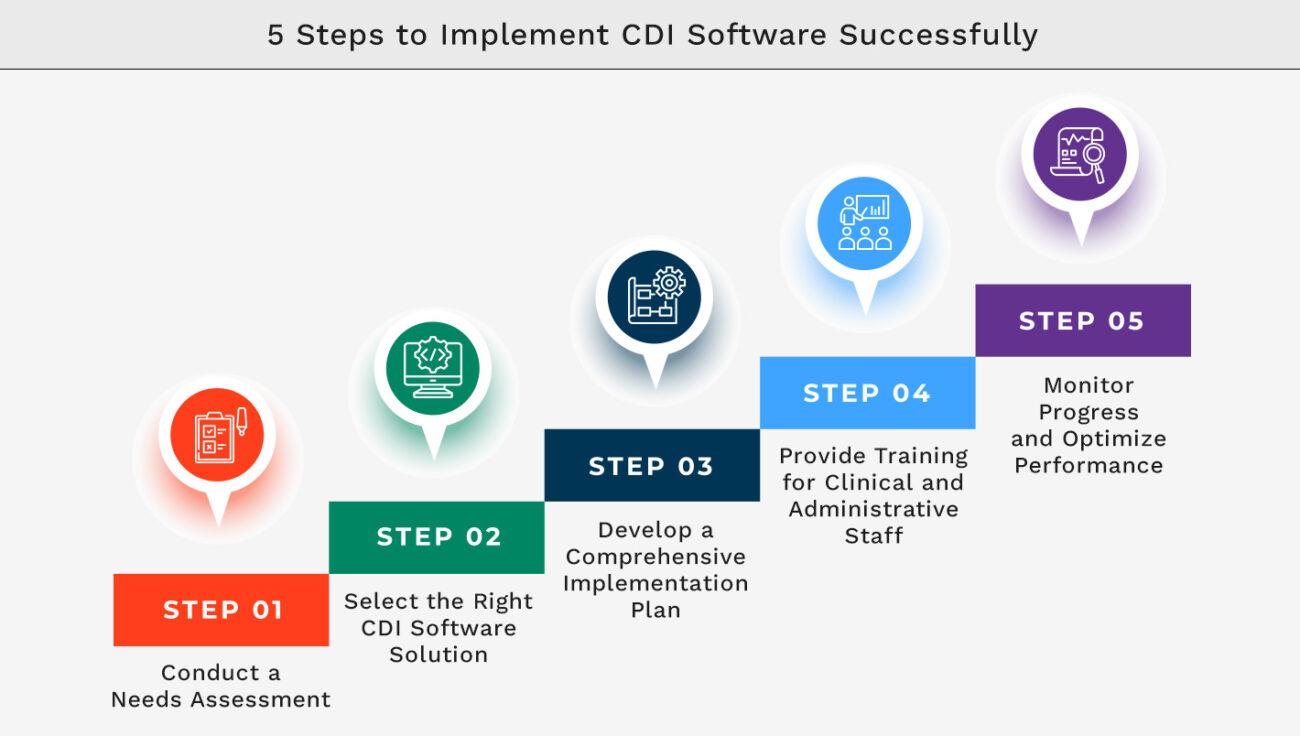
How Kohezion Can Help with Clinical Documentation Improvement
Kohezion provides healthcare documentation solutions to improve your organization's clinical documentation. It makes improving documentation workflows easier for healthcare professionals, allowing them to handle important data well.
The platform is cloud-based, making teamwork smooth. It helps your team talk better and work together well.
The system is easy to use, making your team more efficient. It has strong features for capturing data correctly, which is key to following rules and taking great care.
Using Kohezion helps your healthcare organization improve its documentation. It also allows it to keep up with new rules and focus on patient care.
Kohezion is all about helping healthcare organizations improve their documentation. With this software, you can always improve your documentation, keeping your place at the top of the healthcare industry.
Conclusion
Clinical Documentation Improvement Software is key for healthcare groups that want better documentation, patient care, and success. CDI solutions bring many benefits, like better efficiency, more money, and helping patients and your finances.
CDI software helps doctors follow the rules and improves teamwork. Knowing what CDI solutions offer helps you make smart choices for your hospital.
Using these tools means better care for patients and better business for you. Healthcare tech keeps getting better, so you need strong CDI processes.
For more information on how Kohezion's Clinical Documentation Improvement Software can support your healthcare organization, contact us today to learn more.
Start building with a free account
Frequently Asked Questions
Technology helps make CDI programs faster and more accurate. It automates tasks like data collection, coding, and reporting, reducing human error and making it easier to track improvements in real-time.
CDI programs benefit both healthcare providers and patients. Providers receive clearer, more accurate documentation, which helps with proper billing and compliance. Patients receive better care because their medical records are more complete and accurate.
Some common challenges include resistance to change, lack of proper training, and outdated systems. Getting everyone on board with new processes can also be hard, and technical issues might slow progress.
